It’s the age-old question that has been debated for years: projector vs. TV? Which one is better? Well, the answer to that question isn’t always easy to determine. It depends on a variety of factors, such as your budget, the size of the room you’re planning to use it in, and what kind of content you plan on watching. This article will discuss some of the pros and cons of both projectors and TVs, to help you make an informed decision about which one is right for you!
How to choose a TV for your home?
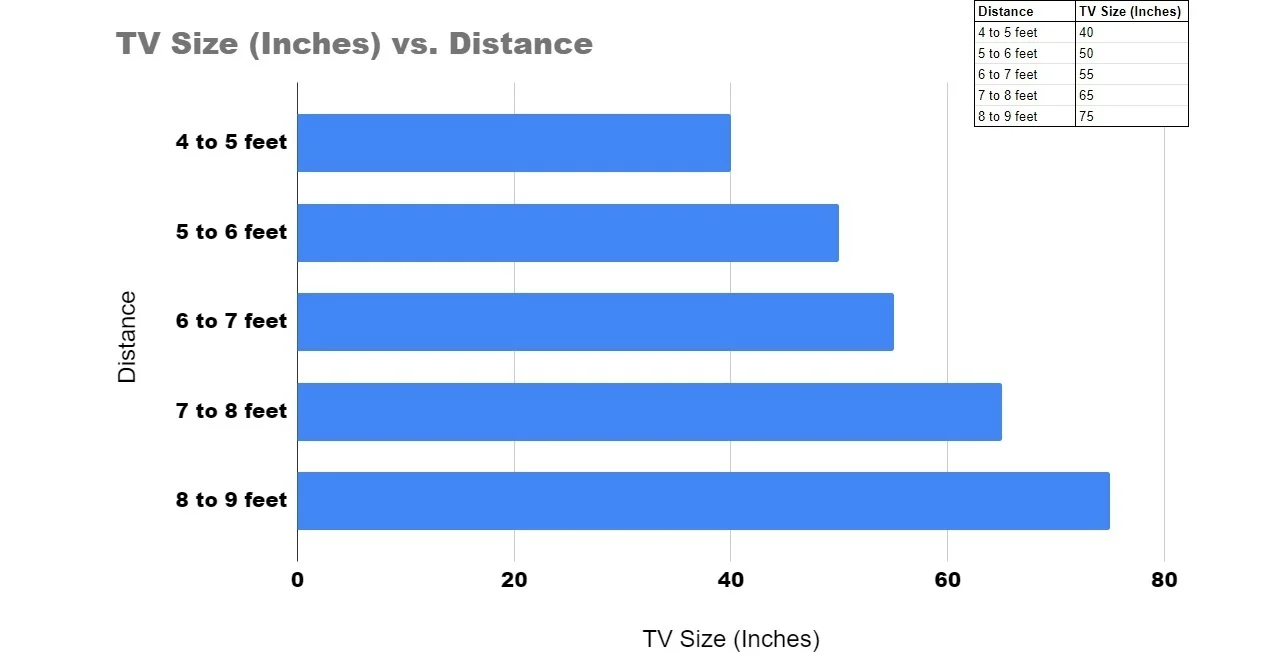
Step 1. Choose your price range
Before you begin looking at TVs, it is important to set a budget. This will help narrow down your options and make your decision easier. Decide how much you can spend on a TV before you start browsing. On average, a home TV can cost anywhere between $150 to $2,000 or even more, depending on the size and features you want.
Step 2. Determine your ideal screen size
Screen size is an important factor when it comes to selecting a TV. A larger screen will give you a better viewing experience, but it may not fit in the space that you have available in your home. You should measure the area where you plan to put the television before making a purchase.
Consider how far away viewers typically sit from the screen when deciding what size to get. On average, the recommended viewing distance is between 1.5 to 2 times the screen size in inches.
Step 3. Consider resolution options

When it comes to choosing a TV, you will want one with a high-resolution display. Resolution is measured by pixels, and the more pixels your TV has, the better the picture quality will be. Look for TVs that offer 4K Ultra HD or 8K resolutions for maximum clarity and sharpness.
Step 4. Look into smart features
Many modern televisions come with built-in smart features such as streaming apps like Netflix, Amazon Prime Video, and Hulu. This allows you to easily watch your favorite shows and movies without needing an external device like a gaming console or Blu-ray player. Some TVs even offer voice control capabilities, so you can easily adjust the volume or change channels by simply speaking a command.
Step 5. Think about audio quality
The sound quality of your TV is just as important as its picture quality, so make sure to look into audio features when making your selection. Look for TVs with integrated speakers that provide clear and powerful sound output. Alternatively, you can invest in an external sound system such as a home theater system or soundbar for an even better listening experience.
Step 6. Look at the picture quality
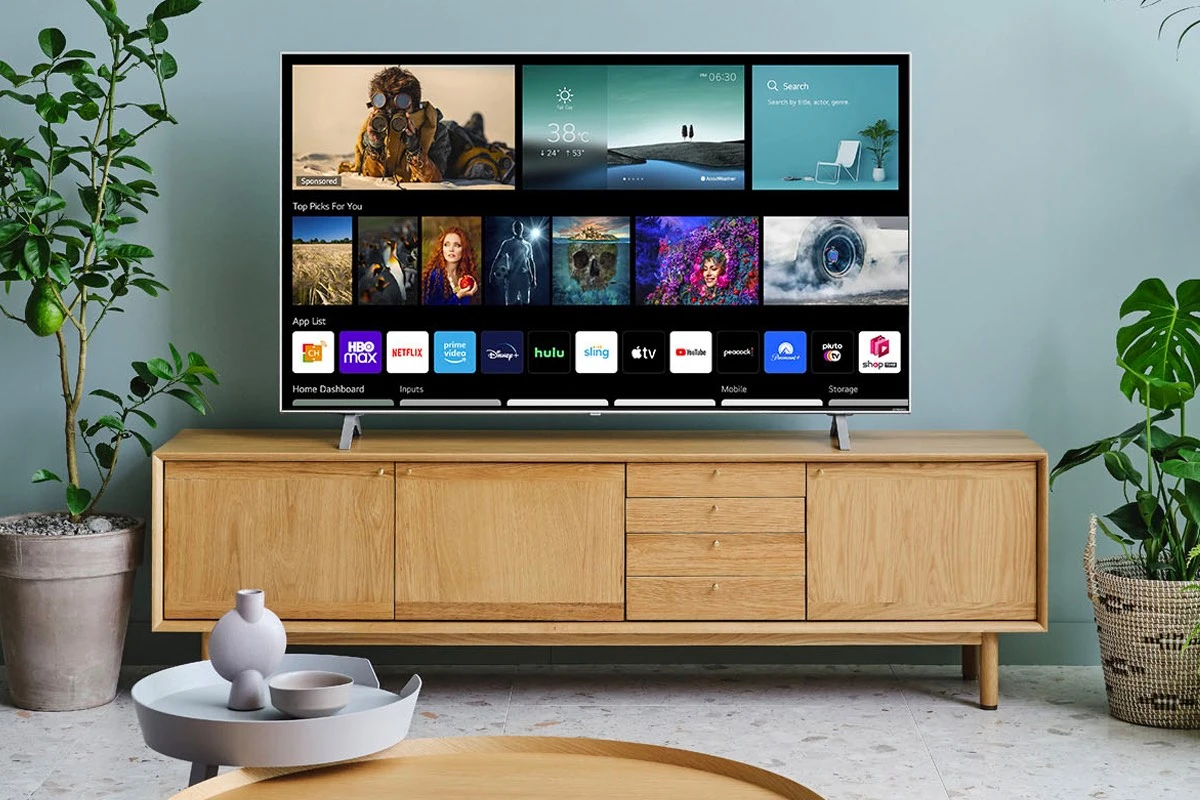
Picture quality is an important consideration when choosing a TV. Look for TVs with high resolution so you can enjoy vivid images and sharp details when watching your favorite shows. Additionally, check for features such as high dynamic range (HDR) and wide color gamut which can help bring out the best in your content with more vivid colors and deeper blacks.
Step 7. Choose between LCD or Plasma
Although LCDs are more popular these days, plasma TVs still offer excellent picture quality and deeper blacks. On the other hand, LCDs are generally more affordable and have better energy efficiency. Consider your budget and viewing habits before making a decision.
Step 8. Check for additional features
Many TVs come with extra features such as compatible ports for connecting external devices like gaming consoles or DVD players, as well as motion sensors that adjust the brightness of the screen depending on the ambient light in the room. Look for these additional features when shopping around to find the best TV for you [1].
How to choose a projector?

Brightness
One of the most important features to consider when choosing a projector is brightness. The brightness of a projector is measured in lumens, and more lumens typically equate to better image quality, particularly in well-lit environments. If you plan on using your projector in a dark room, then you’ll need fewer lumens; however, if you’re going to be projecting onto a wall or screen in brighter rooms such as classrooms or conference rooms, you’ll want more lumens for an optimal viewing experience.
Resolution
The resolution of the projector also needs to be taken into consideration. Resolution refers to the number of pixels that make up an image on the screen. Generally, higher resolutions will create sharper images and finer detail on the screen. However, you should also take into account the resolution of your source material when choosing a projector. If the resolution of your content is lower than that of the projector, then it won’t make much difference.
Connectivity

You’ll need to consider how you plan on connecting devices to your projector. Most projectors will come with one or more HDMI ports which are compatible with most modern media sources such as DVD players and game consoles. Some older models may have legacy connections such as VGA or DVI inputs which can still be used but may require an adapter for newer devices. You should also look out for wireless projection capabilities if this is something that you’re interested in using.
Lens ratio and Throw ratio
The lens ratio of a projector refers to the ratio between the size of the screen and how far away from it the projector must be to properly display an image. The throw ratio is similar but takes into account the size of the image being projected, as well. Both of these factors should be taken into consideration when setting up your projector to get the best results.
Light source
You’ll need to decide between a traditional lamp-based projector and a newer LED or laser-based projector. Lamp-based projectors are typically cheaper, but the bulbs will need to be replaced after a certain amount of time. LED and laser projectors on the other hand have longer lifespans, but they can be more expensive initially. Whichever type you choose should depend on the specific needs of your environment and budget.
Lamp life
The lamp life of the projector should also be taken into consideration. This is how long the bulb in the projector will last before needing to be replaced and can vary significantly between models. If you plan on using your projector frequently, then it might be worth investing in a model with a longer lamp life as this will save you money over time.
Weight and size
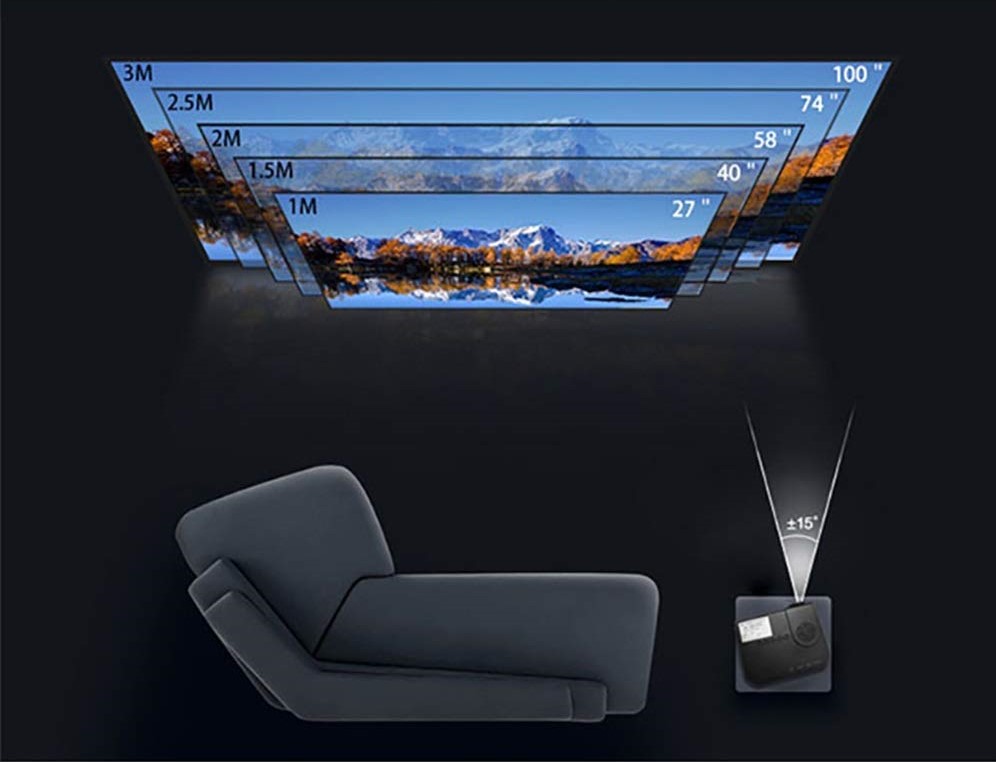
Another important factor to consider is the size and weight of the projector. If you plan on taking your projector with you to different locations, then it’s important to choose a model that is lightweight and compact enough for easy transport. On the other hand, if you plan on leaving your projector in one place, then size and weight may not be as much of an issue. The average weight for most models is around 7 pounds. The average dimensions for a projector are roughly 10” W x 9” D x 3.5” H, but this can vary from model to model.
Price
Finally, price should also be taken into account when choosing a projector. You’ll want to decide what features are most important to you and look for models that fit within your budget. Generally speaking, more expensive projectors come with better features such as higher resolution or brightness levels and longer lamp life so keep these factors in mind when comparing different models. The average price range for most projectors is between $300-$1000 [2].
Projectors vs. TVs: Which is best for your home theater?
Size matters
When it comes to home theaters, size matters. Projectors can produce much larger images than TVs, so for an immersive experience in a large room, the projector wins. That said, the image quality of any projection system is determined by its resolution and how far away from the screen you are sitting. If you’re watching in a smaller space or closer to the screen, a high-resolution TV may provide a better picture.
Brightness
Projectors are typically brighter than TVs and therefore will provide better image quality in rooms with ambient light issues (natural daylight streaming in windows). However, modern LED-backlit LCD TVs have improved their brightness levels significantly over the last few years. So if you’re looking for a bright and vibrant picture, LED TVs can still be a good choice.
Cost
When it comes to cost, projectors are usually the more affordable option. They tend to cost less than TVs of similar size because the technology is less complex. However, when you factor in the extra costs for mounting hardware, wiring, and projection screens, this advantage may be reduced or eliminated.
Installation

Projectors require some additional installation effort compared to TVs. You will need ceiling mounts or wall brackets for proper placement as well as connections for audio/video sources like Blu-ray players and gaming consoles. You also have to consider ambient light levels to get the best image quality from your projector. TVs are easier to install since you just need to place them on a stand or wall mount them and plug in your audio/video sources.
Contrast
Contrast is important for producing vibrant images with deep blacks. TVs usually have better contrast ratios than projectors since they are self-illuminated and don’t require a separate light source. On the other hand, some high-end projectors feature special optics that can enhance contrast and provide more realistic images.
Resolution and HDR
The resolution of projectors and TVs is usually measured in pixels. The higher the number, the sharper the image will be. In addition to resolution, some TVs support High Dynamic Range (HDR) which can make images look more intense with realistic contrast and richer colors. Projectors don’t typically offer HDR but there are a few models that do.
Color accuracy
When it comes to color accuracy, TVs usually have the advantage. They come calibrated from the factory and can be further adjusted with special equipment or software. Projectors, on the other hand, are more difficult to calibrate and may suffer from color shifts over time due to bulb wear and tear.
Sound quality
Sound quality is another important factor when choosing between a projector and a TV. TVs usually have better built-in sound than projectors, but you can always add external speakers to enhance the audio experience. Additionally, some projectors come with built-in speakers that can provide good enough sound quality for smaller rooms.
Smart features
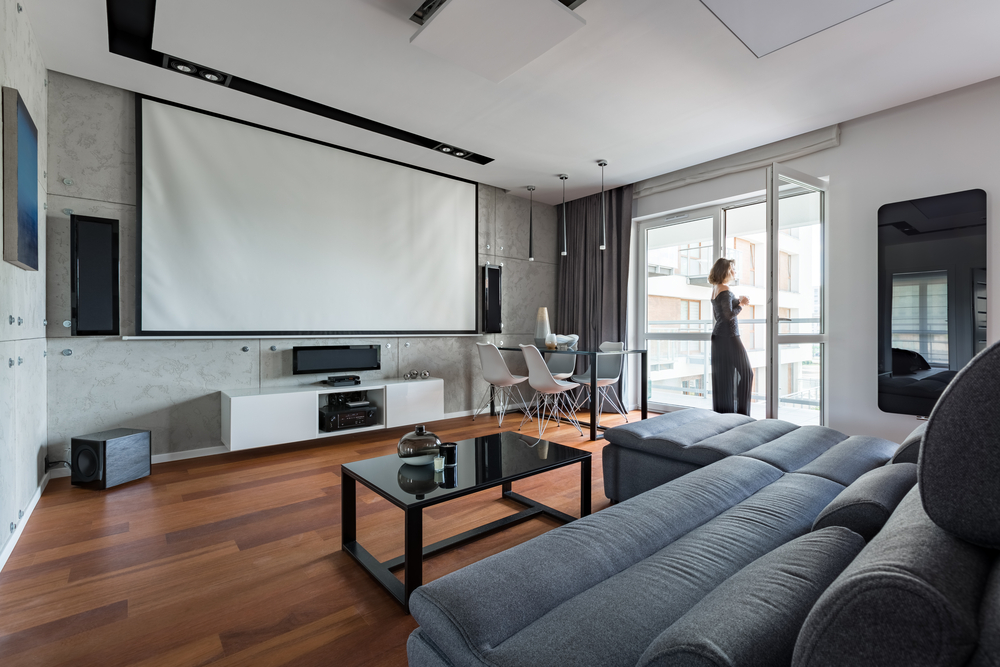
Both projectors and TVs have access to a wide range of streaming services and smart features. TVs generally offer more dedicated support for these services than projectors, but you can always add additional streaming devices like Google Chromecast or Amazon Fire TV Stick for extra convenience.
Portability and outdoor use
Projectors are generally more portable than TVs since they don’t require dedicated space or permanent mounting hardware. This makes them ideal for outdoor use or to bring from room to room with ease. TVs, on the other hand, are more limited in their portability and require some kind of support structure for proper installation [3].
Who Should Use a Projector?
A projector can be a great tool for everyone but is especially beneficial to businesses, classrooms, and home theaters. Businesses use projectors to increase collaboration while presenting interactive visuals. Classroom educators can use projectors to show students visually engaging educational material and resources. Home theater enthusiasts can set up a large projection screen and surround sound system in their living room for an immersive movie night experience.
Regardless of the application, it’s important to select a projector that meets your needs. Choose the right resolution, brightness, contrast ratio, portability, connectivity options, and more to get the most out of your investment. With the right projector setup just about anyone can create amazing presentations or entertainment experiences with minimal effort [4].
LCD vs. DLP vs. LCOS projectors
Projectors are a great way to display large images or presentations for any occasion, but figuring out which type of projector is right for you can be a difficult task. There are three main types of projectors available: Liquid Crystal Display (LCD), Digital Light Processing (DLP), and Liquid Crystal on Silicon (LCOS). Each has unique qualities that make it better suited for specific environments and uses.
The first type of projector to consider is an LCD projector.
LCDs use liquid crystals to create their image. They use two sheets of polarized glass with liquid crystal molecules between them that change polarizing properties when an electric current passes through the crystals.
Because they rely on the orientation of the molecular structure to create an image, their resolution is limited, but they are still capable of producing a large, bright image. LCD projectors also have good color accuracy and produce little heat and minimal noise.
DLP projectors use digital micromirrors instead of liquid crystals to create the image. These micromirrors tilt slightly when electricity is passed through them and reflect light onto the projection surface to produce the image. This allows for higher resolutions and better contrast than LCDs. They are also more efficient in terms of power usage, although they can be more expensive.
Finally, LCOS projectors use liquid crystal molecules that are placed directly on a silicon substrate to create their images. Unlike other projector types, LCOS doesn’t require any light to reach the projection surface, making them much brighter than LCDs and DLP projectors. They also have higher resolutions and excellent color accuracy.
No matter which type of projector you choose, it’s important to consider your environment and the quality of image that you need in order to make an informed decision. Each projector type has its own benefits and drawbacks, so be sure to weigh all the options before investing in a projector.
Advantages & Disadvantages of LCD, DLP, LCOS projectors
When considering which type of projector is right for you, understanding each one’s advantages and disadvantages can help you make an informed decision.
LCD projectors are relatively inexpensive, and they offer good color accuracy and large image size. However, their resolution is limited, and they can be more susceptible to the “screen-door” effect where the lines of pixels become visible on the projected image.
DLP projectors provide higher resolutions than LCDs, but they can be more expensive due to their reliance on digital micromirrors. They also require more power to operate than LCDs, which means they generate more heat and noise.
LCOS projectors produce some of the highest-quality images available due to their high resolution and excellent color accuracy. However, they tend to be the most expensive type of projector available, making them better suited for high-end applications.
When choosing a projector, it’s important to consider your environment and the quality of image that you need in order to make an informed decision. Each type of projector has its own advantages and disadvantages, so be sure to weigh all the options before investing in a projector.
Different types of TVs
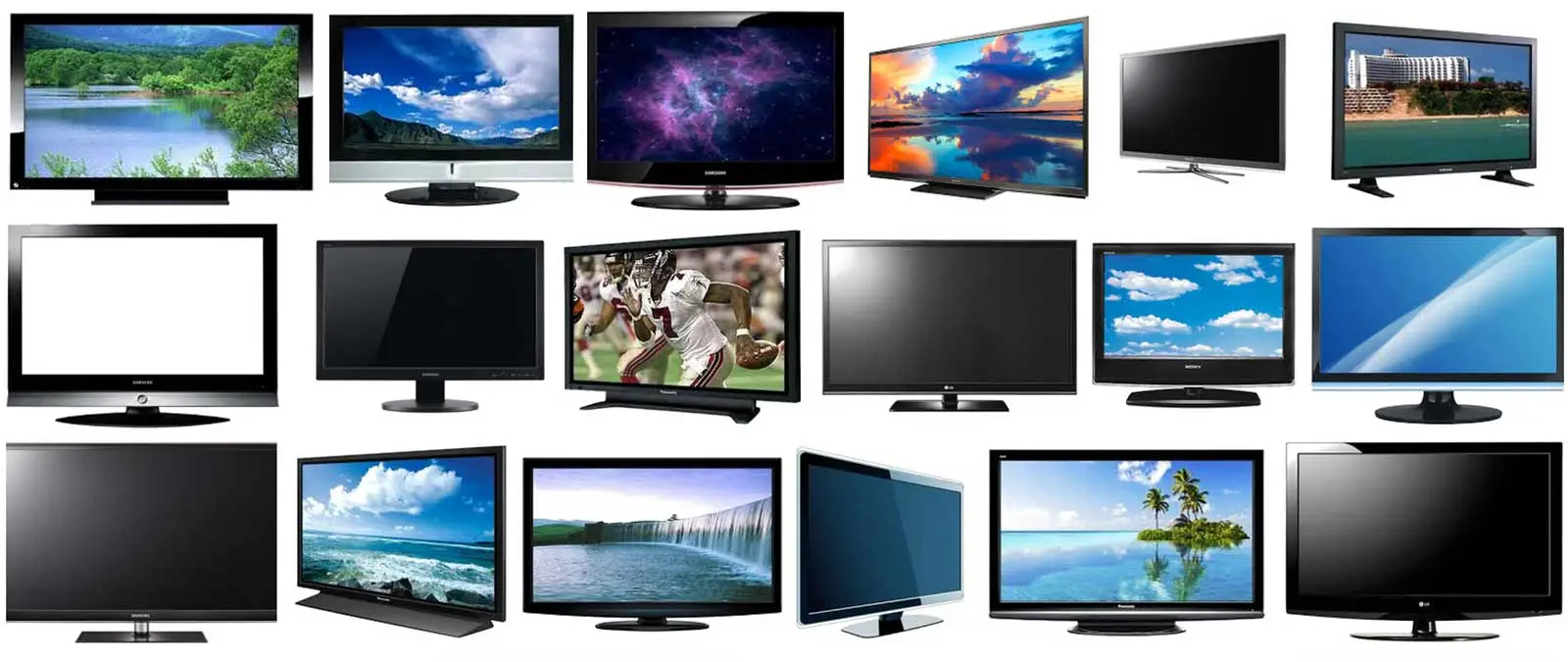
TVs have come a long way in the past few decades, and there are now several different types available. Here’s a look at some of the most popular:
- LCD TVs: LCD (Liquid Crystal Display) TVs use liquid crystals to create an image on the screen. They typically have a thinner design than other types of televisions, making them ideal for wall mounting or smaller spaces.
- LED TVs: LED (Light Emitting Diode) TVs also use liquid crystals but with backlighting technology that allows for brighter colors and better contrast. This makes them ideal for watching movies and sports.
- Plasma TVs: Plasma TVs use gas cells filled with glowing ionized gas to create the image. They tend to be thicker but offer better color accuracy and deeper blacks than LCD TVs.
- OLED TVs: OLED (Organic Light Emitting Diode) TVs use organic materials that emit their light when electricity is applied. This makes them thinner and more energy-efficient than LCD and LED models, plus they have the best picture quality of all TV types.
No matter which type you choose, it’s important to consider features like size, resolution, audio quality, refresh rate, HDR formats, smart capabilities, etc. before purchasing so you get the perfect fit for your home!
Advantages & Disadvantages of TVs
TVs come with a wide range of advantages and disadvantages.
Advantages:
- TVs can be used to entertain, inform, or educate individuals. They provide access to a variety of programming options such as movies, sports, news, etc., which can be enjoyed in the comfort of one’s own home.
- Modern TVs are often equipped with features that make viewing more enjoyable and efficient, such as picture-in-picture technology, 3D capabilities, advanced sound systems, and streaming services.
- Many televisions have also become increasingly energy-efficient over time and utilize minimal power in comparison to older models.
Disadvantages:
- Watching too much television can lead to health problems, such as obesity and eyestrain.
- TV screens can be distracting and interfere with social interaction; people may become isolated from watching their favorite shows.
- TVs can be quite expensive, especially if they are high-end models with advanced features. Additionally, electricity costs may increase due to the energy required to power a television.
- The advertising found on television programs can lead to an increase in impulse buying or unhealthy food choices.
Overall, while televisions have many advantages, they also come with some disadvantages that should be taken into consideration when deciding whether or not to purchase one. Individuals need to consider all of the pros and cons before deciding if television is right for them.
FAQ
What should I look for in a home projector?
When selecting a home projector, there are a few factors to consider. The most important factor is the brightness of the projector, as this will determine how well your image displays in different lighting conditions. Additionally, make sure that you choose a projector with an appropriate resolution and aspect ratio for your needs; an HD or 4K projector may be necessary if you plan on watching high-definition content.
Lastly, check to see what connectivity options are available on the projector; some models come equipped with USB ports and HDMI inputs for easy media streaming from devices like laptops and gaming consoles. With these features in mind, you can select a projector that fits both your budget and viewing requirements.
How many lumens is good for a projector?
The ideal lumen rating for a projector can vary depending on the size of your room and how much ambient light is present. Generally, projectors with anywhere from 1,500 to 2,500 lumens are sufficient for a mid-sized living space with limited lighting. However, if you plan on using the projector in a larger room or an area with more natural light, you may want to consider investing in a brighter model that produces at least 3,000 lumens. The higher brightness levels will ensure that your image is clear and visible no matter where you’re sitting.
Can I watch movies on my projector?
Yes! Not only can you watch movies on your projector, but many models also come equipped with additional features like stereo sound, 3D compatibility, and wireless streaming capabilities. This means that you can now enjoy your favorite movies in a theater-like setting right in the comfort of your home. To get the most out of your movie-viewing experience, make sure to invest in a projector with high picture quality and advanced connectivity options so you can easily stream content from devices like laptops and gaming consoles.
Is there anything else I should consider when buying a projector?
When selecting a home projector it is also important to consider which type of projection technology will best suit your needs. There are three main types of projection technology: DLP (Digital Light Processing), LCD (Liquid Crystal Display), and LED (Light Emitting Diode). Each has its own advantages and disadvantages, so make sure to do your research to find the projector that is right for you. Additionally, be sure to check reviews of different models to get an idea of which projectors perform best and have the features you need. This will help ensure that you are investing in a high-quality product that will last.
How do I choose the right size projector for my room?
When selecting a projector for your home, it is important to take into account the size of the room you plan on using it in. If the room is small, then you will want to opt for a compact projector with a shorter throw distance, as this will allow you to set up and enjoy your movie night without having to rearrange the furniture. However, if you have a larger space available, then investing in a bigger projector with higher lumens and longer throw distances is recommended.
Additionally, make sure that the resolution of the image matches the size of your screen; 4K projectors may be necessary if you have an especially large display. By considering these factors, you can find a projector that fits both your budget and viewing requirements.
Why use a projector instead of a TV?
Projectors offer several advantages over TVs, including larger images and the ability to adjust the size of the display to fit your needs. Additionally, many projectors come equipped with features like HD picture quality and wireless streaming capabilities, making it easier to watch movies and other digital content in full clarity.
Moreover, they require less setup than TVs since they don’t need to be physically mounted or connected via cables; all you need is a flat surface on which to place the projector and you’re good to go! With these advantages in mind, it’s easy to see why projectors are becoming more popular for home entertainment.
Will a projector last as long as a TV?
Projectors are designed to last for many years, just like TVs. However, it is important to note that projectors require more maintenance and upkeep than their TV counterparts since they use a bulb that needs to be replaced periodically.
Additionally, the internal components of projectors can become dust-clogged over time if not properly cared for; this can lead to decreased performance and life expectancy of your device. To ensure maximum longevity, make sure to clean your projector regularly and replace the bulb when necessary. With proper care and maintenance, you can enjoy your home theater setup for many years to come!
How do I choose the best TV?
When selecting a TV, it is important to consider factors like picture quality and display size. High-definition TVs offer greater detail and clarity than standard-definition models, so make sure to invest in an HDTV if you want the best viewing experience. Additionally, be sure to determine the size of your TV based on the available space in your home; measuring the area where you will place the television beforehand can help ensure that you find one that fits perfectly.
Finally, keep an eye out for features like built-in streaming services and voice command capabilities when shopping around; these can add even more value to your purchase! By considering all of these elements carefully, you can find a high-quality TV that meets all of your needs.
Which TV is better, LED or OLED?
When it comes to deciding between LED and OLED TVs, the choice is often determined by personal preference. The main difference between these two types of television technology lies in their display capabilities; OLED TVs offer superior picture quality and deeper blacks than traditional LCD/LED models due to their use of organic light-emitting diodes. However, they can be more expensive than their counterparts and may not be as bright or vibrant overall. On the other hand, LED TVs are usually less expensive and provide brighter images thanks to their use of light-emitting diodes (LEDs). Ultimately, both options offer excellent viewing experiences with plenty of features to choose from, so make sure to research each one thoroughly before making your decision.
Which TV brand is best in quality?
When it comes to selecting a TV brand, there is no definitive answer. Different brands offer unique features and benefits that make them stand out from the competition. Some of the most popular television manufacturers include Samsung, LG, Sony, TCL, and Vizio. Each company has its strengths when it comes to offering quality products; for instance, some specialize in high-end TVs with cutting-edge technology while others focus on providing good value for money.
Ultimately, doing your research and comparing different brands can help you find a television that meets your needs and budget.
Is a projector better than a 4K TV?
The answer to this question depends on your personal preference and needs. It is important to note that 4K TVs offer superior picture quality compared to traditional HD models, with four times the number of pixels for sharper images and more vibrant colors. In comparison, projectors tend to be brighter than TVs and can provide a larger screen size; they also don’t need to be physically mounted or connected via cables. Ultimately, both projector and 4K TV technologies have their advantages; it is up to you to decide which one best suits your home entertainment setup.
Can you use a projector for everyday TV watching?
Yes, you can use a projector for everyday TV watching. Although projectors are mainly used for movies and other entertainment purposes, they can also be used to watch regular television programming. To do this, you will need to make sure that the projector is compatible with your cable or satellite box.
Once connected, you should be able to view all of your favorite shows in larger-than-life proportions on any wall or screen in your home! With the right setup, projectors can provide a truly immersive viewing experience for all types of content.
Useful Video: TV vs Projector in 2023: Don’t make a mistake! – MACH
Conclusion Paragraph
Projectors and TVs are both great for watching movies or playing video games. Which one you choose depends on the size of your room and how much money you’re willing to spend. Projectors are more cost-effective, as they offer a larger viewing experience for less money. However, TVs have the advantage of being simpler to install and maintain. They also provide a clearer picture quality, making them great for watching live events. Ultimately, the best option is up to the individual and their particular needs. No matter which device you decide to use, it’s sure to make movie night even more enjoyable!
References
- https://www.worldwidestereo.com/blogs/wws-underground/entries/how-to-choose-the-best-tv
- https://www.nytimes.com/wirecutter/blog/how-to-pick-the-right-projector/
- https://www.digitaltrends.com/home-theater/projectors-vs-tvs/
- https://www.avisystems.com/blog/5-reasons-office-needs-projectors





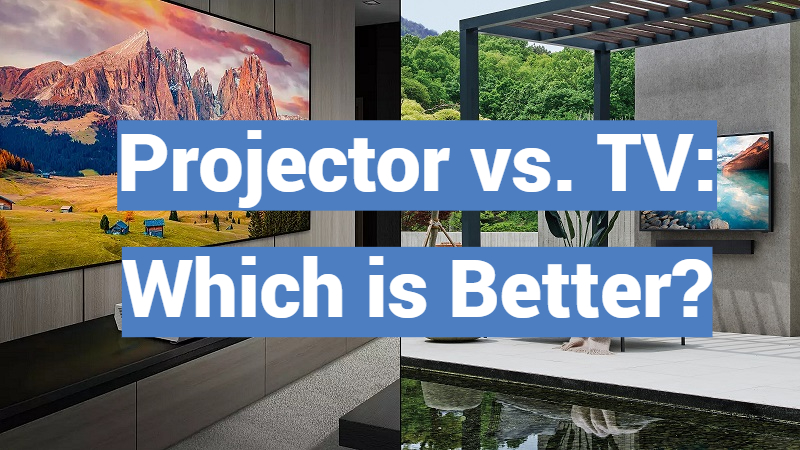

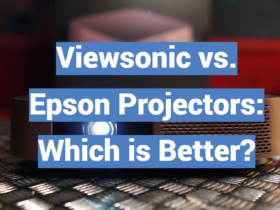
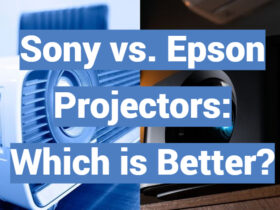
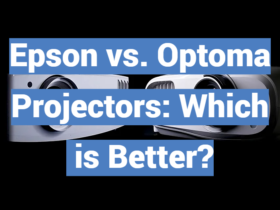
Leave a Review